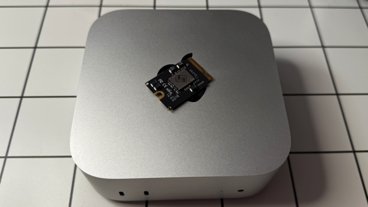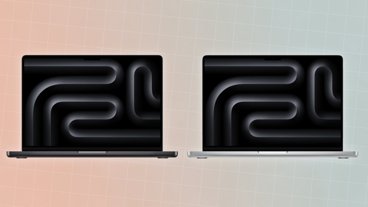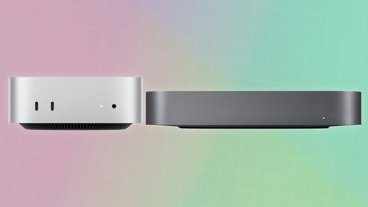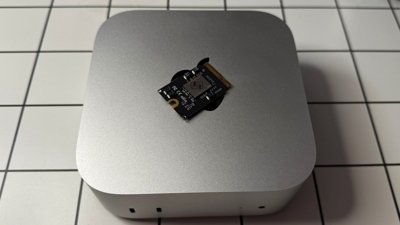Apple could add vapor chamber heat sinks to the iPhone 17 to help it run cooler and faster for longer.
A limiting factor for mobile devices is thermal management, as cooling the heat-generating chips is difficult in such a small volume. It's now claimed that Apple will be doing something about it in the next iPhone generation, using a technology already in use by rivals.
According to a Fast Technology industry rumor picked up by MyDrivers on January 16, Apple is going to be using vapor chamber cooling on its iPhone 17 series. This will apparently be for both non-Pro and Pro models.
A better cooling system
Currently, the iPhone relies on heat sinks to draw heat away from the processing components using solid metal structures, but that has its limitations. A vapor chamber, on the other hand, does so using liquid sealed in a container.
When heated by a source, the liquid evaporates and moves around the chamber as vapor, spreading the heat around. That vapor condenses down to a cooler liquid, which returns to a wick structure to be heated again at the source.
The technology offers quite a few benefits, including potentially pulling the heat further away from the processor to less temperature-sensitive areas. It's also fairly space-efficient and is a technique that doesn't rely on fans or other environmental cooling effects.
It can also help cool down other elements of a smartphone too. For example, the heat generated by recharging the battery, especially when using wireless charging methods like MagSafe.
A heating issue
Vapor chamber cooling isn't a new technology, as they have been employed by some high-end Android smartphones for a few years already. It's proven itself to be a useful technology, and one that Apple could certainly implement in its hardware.
Heat has been a problem for Apple, with iPhones often overheating when under heavy processing loads for long periods of time. This became a big issue for the iPhone 15, which forced Apple into releasing a patch to try and solve overheating instances.
For Apple, vapor chambers offer advantages in cooling the main system-on-chip down. For a start, it allows the chip to run for longer before reaching a thermal limit, which can induce throttling as the iPhone tries to cool down.
This in turn results in higher levels of performance for users. The extra onboard processing performed by Apple Intelligence is expected to increase over time as more features arrive, and heat will become more important to manage.
It can also help reduce instances where the user may feel the iPhone is warm to the touch, which can occasionally occur.
A plausible rumor
While the report from MyDrivers is plausible, in part due to its track record of reporting rumors, the vapor chamber claim benefits from being something discussed in the past.
In August 2024, TF Securities analyst Ming-Chi Kuo claimed Apple was looking into adding exclusive features to the iPhone 17 Pro Max, including vapor chamber cooling. If true, this would give the Pro Max model a considerable advantage over other models, if it's the only one to gain vapor chamber cooling.
The Pro Max model is also a great candidate for gaining vapor chamber cooling. Due to its size, it's theoretically easier for Apple to install the chamber in the first place.
This is also not the first time that vapor chambers have been considered by Apple. In January 2021, Kuo again reported that his industry surveys revealed Apple was "aggressively" testing vapor chamber thermal systems for use in an iPhone.
 Malcolm Owen
Malcolm Owen







-m.jpg)






 William Gallagher
William Gallagher
 Wesley Hilliard
Wesley Hilliard
 Mike Wuerthele
Mike Wuerthele
 Amber Neely
Amber Neely

 Christine McKee
Christine McKee

 Andrew O'Hara
Andrew O'Hara
-0-15-screenshot-m.jpg)






4 Comments
While I applaud any heat-related improvements in iPhones, I think whatever heat 'problem' iPhones are stated to have is completely overblown. I've had both the iPhone 15 and 16 Pro Max's and never noticed any unusual heat, except the first few days with the iPhone 16 when, presumably, the AI models used on the device were being built. Oh, and my particular EV's wireless charging heats up the iPhone like mad, but I think it's a car problem as Android phones are having the same issue in this car.
Vapor chambers are nice for chips with higher power density, or higher W/cm2. For example, it would allow for the use of smaller chips that emit the same amount of heat as a bigger chip, as the heat transfer from the chip to the heat spreader could be gated by thermal paste and graphene heat spreader. Ie, vapor chambers can transfer heat out of the chip better than a solid heat spreader.
Apple's SoCs are typically pretty big, and required less power on average, and have avoided needing the use of vapor chambers. That's not some failure of engineering as all these articles intimate at every time a rumor of a new thermal system pops up. It's just good system design, using their advantage with Apple silicon.
That heat still has to go somewhere, and it will feel just as hot on the surface of the iPhone. The temperature on the surface of the phone is what really drives how much power the iPhone can use, and Apple has to design the thermal system from the surface to the chip.